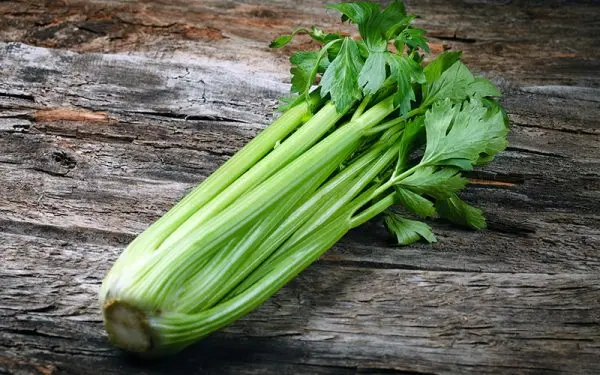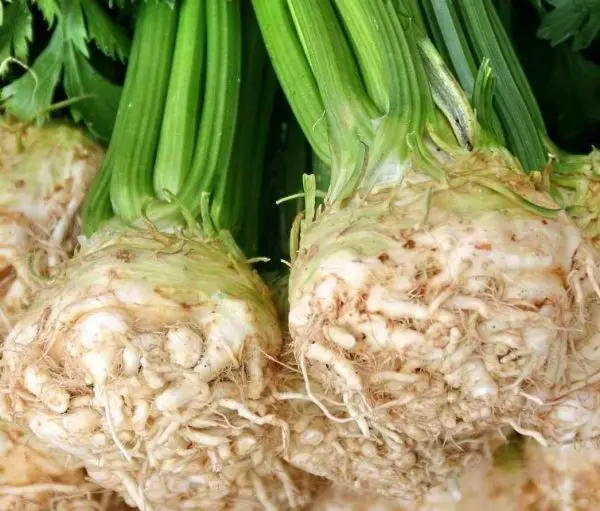

Celery leaves slightly resemble parsley in appearance, but the smell and taste will not allow them to be confused. Leaf celery is not such a frequent visitor to our dachas as other spicy greens; until now, only gourmets have grown it. But the abundance of information about its beneficial properties makes us take a closer look at this wonderful plant. The unique composition of vitamins, microelements and essential oils determines its general strengthening, anti-inflammatory, antibacterial and sedative properties.
Varieties of leaf celery
Almost all varieties of leaf celery produce abundant greens and have good taste characteristics. You can choose among them only based on their agrotechnical features: ripening time, growing conditions. So there are early, mid-season and late-ripening varieties, some are best grown in open ground, and some in a greenhouse or even on a balcony. If you plant varieties with different ripening periods in the garden, then the greens will be on the table all season, and everyone needs the same care.
When buying seeds, you should pay attention to the timing – after 4 years of storage, their germination drops sharply. “Samurai” is the most unpretentious of all varieties of leaf celery cultivated in our country. It easily tolerates drought and lower temperatures, the rosette grows up to 65 cm, its curly leaves with corrugated edges are very tasty and look attractive. You can pick them 75 days after seed germination.

Zakhar is chosen by those who want to get a big harvest. This is a mid-late variety with hairless leaves, a semi-raised rosette 26 cm in diameter and up to 35 cm high. Up to 120 leaves are formed on one plant, after cutting they quickly grow back. Leaves can be consumed 105 days after germination, but they are considered ripe only on day 150.
“Kartuli” is a mid-season variety of Georgian selection, the rosette is erect, the petioles are dark green, and the leaves can be cut off after 65 days. Plants of this variety very courageously endure the lack of moisture or heat. “Gentle” gives a green crop 110 days after germination, its semi-vertical rosette forms many side shoots.
“Cheerfulness” is not afraid of temperature changes, tolerates cold snap and short-term drought, its carved fragrant leaves ripen 70 days after seed germination. The variety “Local” is distinguished by a high content of ascorbic acid, leaves on long hollow petioles grow up to 65 cm. Up to 1 kg of greenery can be harvested from 3 square meter of plantings.

“Improved Green” forms a semi-spreading rosette, which can consist of 100 – 120 leaves. “Sail” is also a high-yielding celery variety with a semi-spreading rosette. Leaf celery is much less commonly grown in summer cottages than root celery, which probably explains the small selection of varieties of this species.
Video “Planting celery”
Recommendations for sowing leaf celery seeds at home for sprouting seedlings.
Landing
Celery is considered a cold-resistant plant, but its seedlings may suffer from spring frosts, cutting leaves begins 1,5 months after seed germination – all this causes the cultivation of leaf celery through seedlings. Indeed, sowing seeds in the ground in spring (and this is not earlier than May) means getting leaves in the middle of summer. It is better to plant strong seedlings and enjoy fragrant leaves from the beginning of summer. Therefore, they begin to deal with seeds in March.
First, they are soaked for several hours with warm water, preferably with a weak solution of potassium permanganate, then they are kept on wet gauze for a couple of days. When the seeds are hatched, they are laid out on the prepared soil in boxes or pots, lightly sprinkled with peat on top, and watered with a spray bottle. The boxes are then covered with glass or film.

The soil is prepared as follows – they take leafy soil, peat, humus and sand in equal amounts. It is advisable to leave the boxes in the light and maintain a temperature of +20 – +25 degrees. Shoots should appear in 5-6 days. Celery seeds have very uneven germination, and it increases during storage, so it is best to sow planting material two or three years ago, and not last year.
There is also such a method of sowing: the prepared seeds are placed on snow laid on the ground with a dense two-centimeter layer, the boxes are covered with glass on top and put on a window sill illuminated by the sun. After the emergence of seedlings, the glass is removed, the sprouts are lightly covered with soil or peat. With such germination, the glass is not removed for irrigation, and the seeds have enough moisture from melting snow.
After the appearance of sprouts, the glass is removed, and the seedlings are transferred to a bright room with a lower temperature – from 15 to 18 degrees. A higher temperature will cause weak sprouts to stretch upwards, this will not make them stronger, but rather weaken them. The same will happen with a lack of light.

When the plants have 2 true leaves, they need to dive. Each sprout is transferred to an individual cup (maybe peat) or at least at a distance of 5 cm from each other, pinching the main root. After that, the seedlings begin to be prepared for planting in open ground – every day they are taken out into the fresh air, accustomed to sunlight.
May, when the heat is already established, is a great time to plant seedlings in the garden. Plants are planted at a distance of 25 cm from each other, this must be done very carefully so as not to expose the roots, but also not to deepen the growth point, it must remain above the ground. It is best to do this in the evening or choose a cloudy day. Leaf celery should not be planted after parsley, carrots, parsnips, or dill.
The soil for its cultivation should be light, fertile and neutral. Loam or sandy loam is best. If the soil is heavy, in the fall you need to add sand, sawdust (when there are no rotted ones, then fresh ones are specially prepared) or peat. Then, in the fall, humus or compost is introduced for digging. Celery will thrive in slightly acidic soil with good care, but it will have a slightly different flavor.

Care
2 weeks after planting seedlings in open ground, they are fed for the first time. It can be nitrogen-potassium fertilizers from the store or a solution of chicken manure, diluted 1 to 10. Repeat feeding after a month. When growing leaf celery, nitrogen-potassium-phosphorus fertilizers are used several times. Some owners prefer to feed plantings only with a solution of bird droppings, mullein or herbal mash. After watering with fertilizer, the leaves are usually washed with clean water, and the earth is loosened.
Growing celery does not require special care; this culture cannot be called capricious. A biennial plant is cultivated as an annual, from planting seedlings in the ground to autumn harvesting, several cuts of leaves are produced. To wait for their seeds, you need to protect the plant from the winter cold.

In the south, it is enough just to cover the plant for the winter, and then in the second year of cultivation, do not cut off the flower stalks, allow the real fruits with seeds to bloom and ripen. If the weather does not allow wintering in the ground, then the plant with an earthy clod is simply transferred to the cellar, the shoots from it are pre-cut, kept in a dark, cool, rather humid room. And in the spring they return to the garden.
Caring for leaf celery involves timely watering, weeding and loosening the soil. He loves a lot of moisture, but excess water should not stagnate. High humidity and planting density can promote the breeding of slugs, snails, cutworms or infection with blackleg, rot. Therefore, it is so important in the care of celery to prevent shading, breeding weeds.
Plant residues should not be stored between rows. After watering or top dressing, it is imperative to loosen the soil, the formation of a crust should not be allowed. Many summer residents solve all these problems with the help of mulching.
Growing leaf celery does not hide any pitfalls, does not require too much effort or time, a novice gardener can take care of it. The benefits of spicy leaves are worth much more trouble. The leaves are not only eaten fresh, they are traditionally dried or frozen to promote health or simply to enjoy adding it to food all year round.

Video “Growing celery seedlings»
Video instruction for planting leaf celery seeds. Soaking, sowing, and caring for a young plant.









